After the widespread dismay that was expressed over the effects of the heavy-handed noise suppression seen in the first sample photos from Kodak's forthcoming Pro 14n full-frame digital SLR, Kodak's Jay Kelbley sent me the sample images you see linked (and cropped) below. These are all from the same raw file from the camera, but Jay varied the amount of noise reduction that's been applied to them, using settings of "0", 50%, and 100%. (The previous samples shown here were processed with the noise reduction parameters set to the 50% level.) - I put quotes around the "0" above though, since it's obvious that even at that setting, quite a lot of noise reduction processing is still being applied to the image. The full thumbnail below shows the image as a whole (a much higher-quality image than any we've seen previously, as well - finally some good-looking skin tones), and the crops below it show two different parts of the image at 1:1 size, for each of the noise-reduction settings applied.
A new sample image from Kodak...
(See links below for the full-size original) |
 |
| Follow these links for versions of the above image with: |
I'd caution readers to not place too much weight on the quality of these images, as Kodak has made clear that they're still actively tweaking the camera's firmware. It does indeed seem that they have a ways to go with the product, as the photos posted on the Kodak site show evidence of significant sensor noise, with fairly aggressive noise-reduction processing to cope with it. The shots below are cropped from two of the images posted on Kodak's site, the one on the left from the "low key" portrait of the girl, the one on the right from the still-life shot of the fruit. Below each shot, you'll find my observations regarding sensor noise and the noise-reduction processing that's being applied.
| Here's a crop from the version of the file processed with the noise-reduction settings set to their minimum values. As you can see from the blotchiness in some of the solid hair areas, there's still a fair bit of noise-reduction processing being applied. | 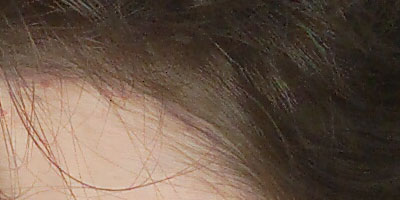 |
| This version was processed with the noise-reduction settings both set to the 50% point. From what Jay told me, this is what was used in processing the other 14n samples published by Kodak. Definitely a lot of noise-reduction here! | 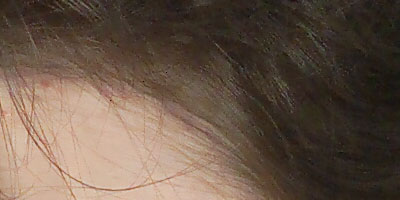 |
| This is the result of setting both noise-control sliders to 100%. (Yuck.) | 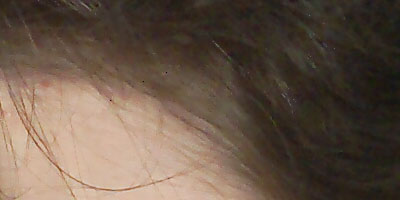 |
| Another crop, this time showing some high-contrast subject matter. (And indicentally, a little color moire in the highlights of the model's hair.) Noise-reduction flattening of subject contrast is less obvious here. | 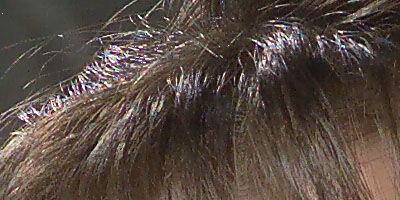 |
| The same crop as above, this time processed with the 50% noise-reduction settings. | 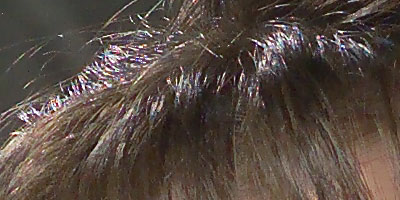 |
| The same area, this time with noise-reduction sliders set to 100%. | 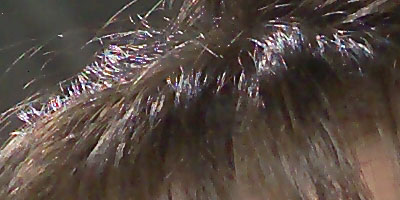 |
I thought people might be interested in what the user interface for the updated Kodak software looks like, so here are two screen shots. The first shows the main control panel, the second the "noise control sliders" I've been referring to above. (Thanks to Jay Kelbley for the screenshots, I don't yet have a copy of this software.)
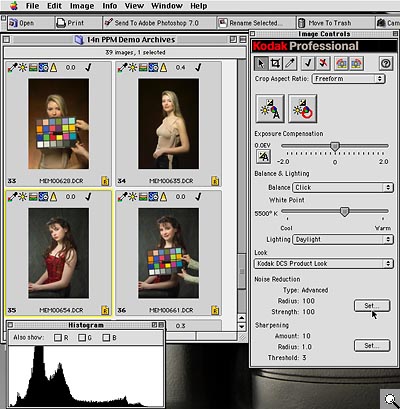
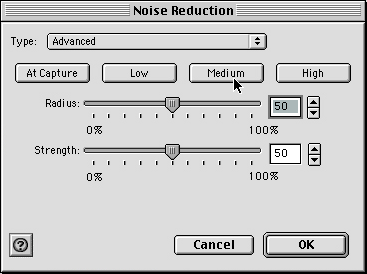
Once again, there's the obvious caveat that the results above are from a prototype camera, and processed with beta (alpha?) software. I think there's some hope to be found here, as follows:
- The first images displayed by Kodak apparently had the noise-reduction parameters set quite a bit too high, producing horrible flattening of detail in areas of low contrast.
- Images processed with minimum noise-reduction settings look a good bit better, albeit still far from perfect.
- There seems to be a fair bit of room for Kodak to further reduce the amount of noise-reduction processing that's applied in the software at the "minimum" setting.
That said, what we don't know yet is how much sensor noise is in there that the software is masking. There could be a good bit, as evidenced by the speckles of noise that appear around the periphery of contrasting objects. Then again, these images are still from a prototype camera with early beta software, so it's anyone's guess what the final product will end up looking like. Further speculation is really pointless at this stage of the game, but it is encouraging to see the improved color and detail shown in the image above. Stay tuned - If I get hands on any still-better images, I'll share them here, else I'll just wait for Kodak to get a production model to me to test.
(As before, one thing that I *can* safely predict at this point though, is that the 14N will almost certainly be in short supply when it first ships. If you think you even *might* be interested in one, it would be wise to get in line for it early. - Follow this link to place a pre-order with our preferred affiliate, Ritzcamera.com. - Your orders help support this site.)